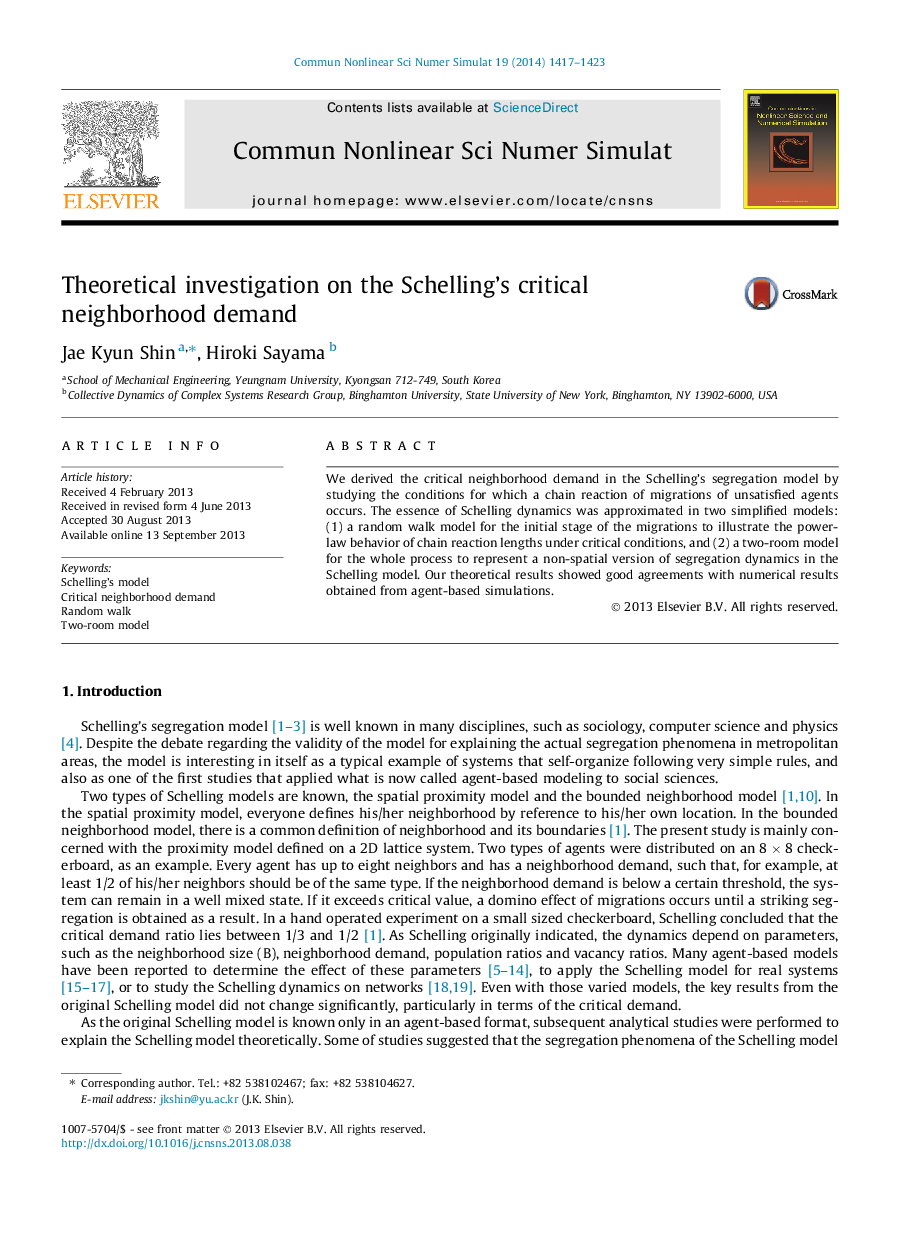| Article ID | Journal | Published Year | Pages | File Type |
|---|---|---|---|---|
| 755827 | Communications in Nonlinear Science and Numerical Simulation | 2014 | 7 Pages |
•First proposed a theoretical counterpart of the Schelling’s agent-based model.•Schelling’s critical neighborhood demand is theoretically derived.•Critical condition is explained in terms of continuous chain reaction.•Initial phase of the Schelling dynamics is explained by a random walk model.•Two-room model is proposed as an aspatial version of the Schelling model.
We derived the critical neighborhood demand in the Schelling’s segregation model by studying the conditions for which a chain reaction of migrations of unsatisfied agents occurs. The essence of Schelling dynamics was approximated in two simplified models: (1) a random walk model for the initial stage of the migrations to illustrate the power-law behavior of chain reaction lengths under critical conditions, and (2) a two-room model for the whole process to represent a non-spatial version of segregation dynamics in the Schelling model. Our theoretical results showed good agreements with numerical results obtained from agent-based simulations.
